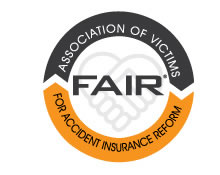Ontario Rehab Alliance
We will undoubtedly see fellow Ontarians, whose horrific crashes result in quadriplegia, severe brain injuries and amputations, live the rest of their lives with little or no dignity. The future of their children, wives, husbands or parents will be forever changed as they have to rededicate their lives to being full-time caregivers in light of these deep cuts to the benefits.
Ontario Spinal Cord Injury Solutions Alliance
We hope you take this testimony seriously and really encourage our government to look at these auto insurance benefits and their thresholds because we feel that we can provide support in that. The budget can’t go through with just the 50% reduction. It will destroy people’s lives and we will be more dependent on the health care and public system. We hope that you can consider making amendments to this Bill 91 to ensure that people are having the appropriate services under the catastrophic injury legislation.
McLeish Orlando
If there still have to be further savings, and if that needs to be done outside—we have to have a profitable insurance product, absolutely, but if more savings have to be done, don’t do it on the backs of the quadriplegics and the severe traumatic brain injuries. Look elsewhere to make your savings. Look at changing the system, procedural changes so that it’s easier for people to make claims without lawyering up. There are all kinds of different avenues.
Association of Independent Assessment Centres
The AIAC supports the revision of the definition of “catastrophic impairment.” That being said, there are currently only a few hundred properly trained and qualified experts in Ontario to conduct these complex and important assessments. In the event that there is any change, there should be an appropriate rollout period allowing for proper training and certification.
Ms. Karen Rucas: It means fewer people are going to get catastrophic impairment. Right off the top, they’re getting rid of the Glasgow coma scale. Those are the people who are unconscious at the scene.
There are other more stringent measurement tools that they’re going to be using, so fewer people are going to be—as it is, only 1% are catastrophic. So now even fewer than 1%—and, again, I don’t understand why the insurers are tackling the most seriously injured.
In fact, I think what consumers think is that they actually have $1 million of coverage, but they don’t. They’re shocked when they find out—“It’s $3,500? You mean, that’s all I get?” Often, again, they run out of the $3,500. We’re making these levels so arbitrary, and it’s just not feasible anymore to provide them with the rehab they need and to get them back to work and get them back functioning. Instead, these people go on CPP or what have you.




